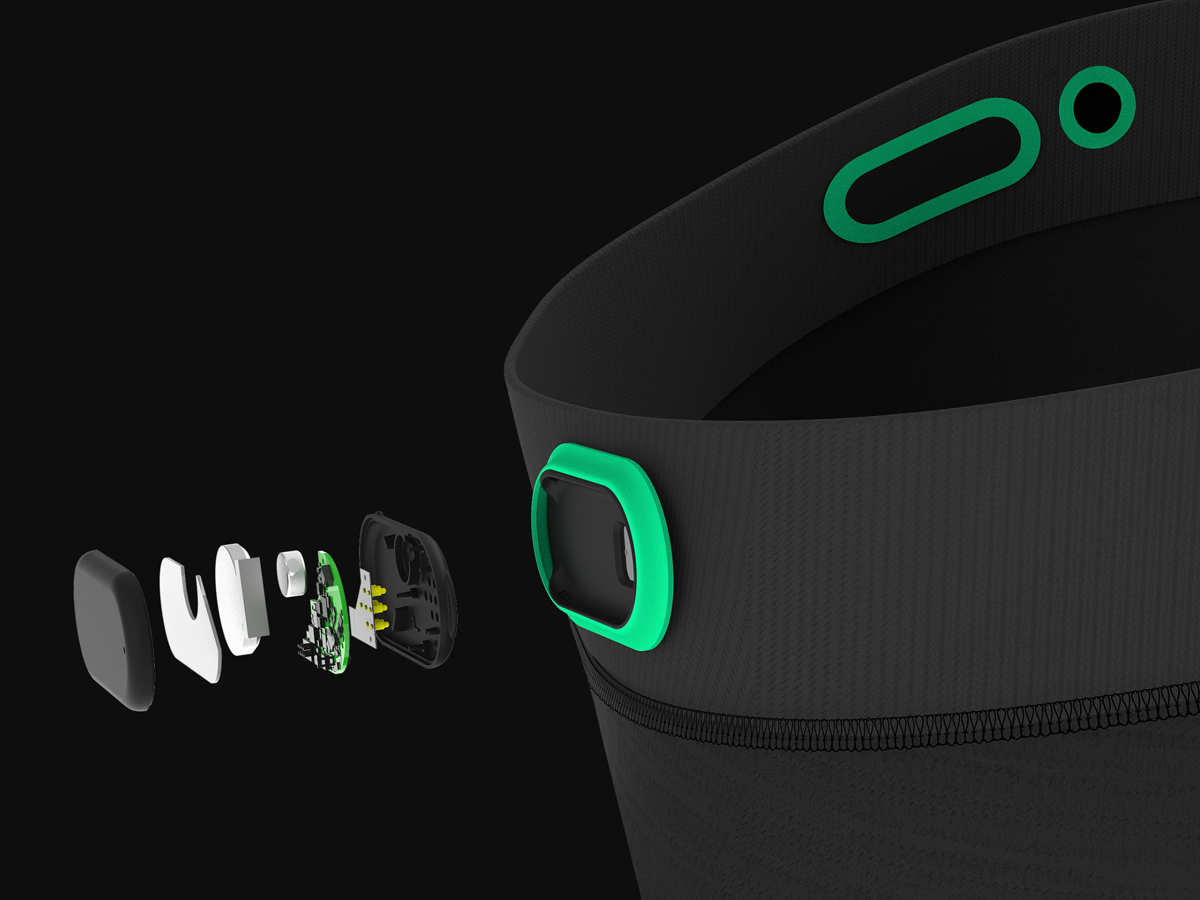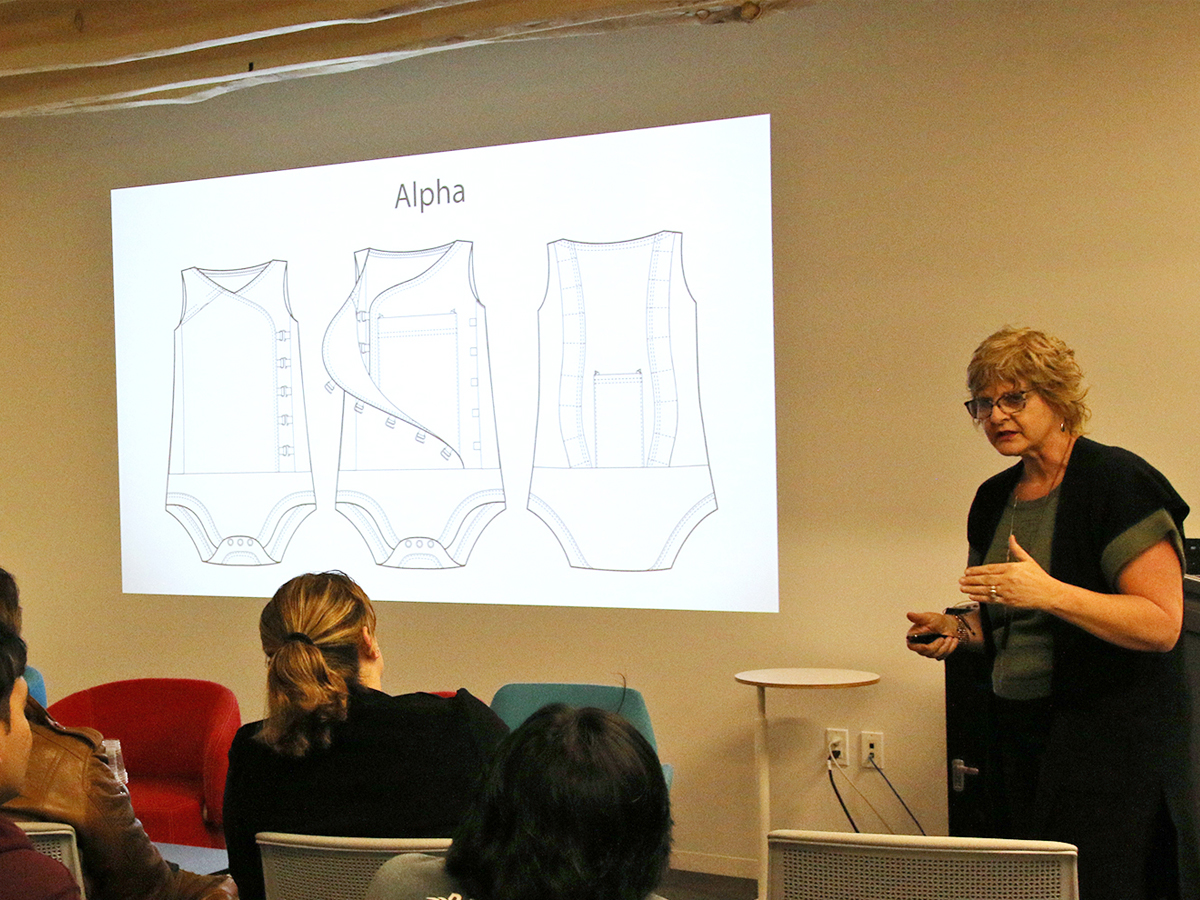Ryerson researchers help weave the future of smart fabrics

Myant Inc. has "smart" apparel that can monitor everything from ECG to sleep quality.
The future of clothing will be interwoven with technology – literally.
A shirt that can continuously measure blood pressure, a sleeve that can help assess athletic performance or clothing that helps monitor the heart health of pregnant mothers and their children – these are all textile computing products that have recently been developed.
Textile computing is where digital technology becomes a built-in part of fabric, enabling the creation of "smart" clothing or other "smart" textile products that often incorporate sensors or continuous monitoring. Research being conducted in Ryerson labs in textile computing involves everything from controlling sensors built into textiles with brain signals, to using nanomaterials to waterproof clothing, to developing batteries that can be integrated into garments.
A recent panel hosted at The Catalyst at FCAD (Faculty of Communication and Design), titled Textile Computing: The Future of Health Care, Wellness and Beyond, featured several Ryerson researchers. The researchers offered highlights of their work in the area from a variety of disciplines like engineering, chemistry and fashion design.
Panel moderator Kirsten Schaefer, the project manager at Ryerson's Myant Lab for Textile Computing, said that textiles are the computing interface of the future and that the panel participants would offer a snapshot of what's happening in the industry already and the kind of research that's currently underway.
Myant Inc. is a Toronto-based company that specializes in textile computing and donated essential equipment to the lab. Myant's vice-president of strategy and partnerships, Dan Herman, attended the panel and gave an overview of the company and their products. Myant is collaborating with Ryerson to support interdisciplinary textile computing-related research.

Ryerson fashion professor Sandra Tullio-Pow presents during a recent panel on Textile Computing: The Future of Health Care, Wellness and Beyond.
"Everything is smart around us," Dan Herman said. "But in this world of smart devices, we're actually missing something, and what we're missing today is an equally smart interaction with the human body."
He says the company focuses on clothing as a way of establishing a connection between wearable technology and users that doesn't require the users to change their behaviour. The company also hopes to make possible more personalized healthcare monitoring and treatment.
There are many challenges involved in developing technology that can be built into clothing. Ryerson researchers presenting at the panel outlined several of them, as well as ways in which different disciplines can respond.
Fashion professor Sandra Tullio-Pow believes that fashion designers can help overcome challenges using their expertise in the human body and the functionality people require from clothing. She emphasized the need to work with interdisciplinary teams on textile computing projects.
Professor Hadis Zarrin from chemical engineering is interested in how batteries for textile-based technology need to be able to stretch with the fabric. She is also working to address battery maintenance issues such as loss of performance due to water exposure during laundering, or the need for frequent charging.
Chemistry professor Stefania Impellizzeri spoke to how the cost of materials like gold or platinum used in "smart" nanotextiles can be cost prohibitive. She highlighted the need to find and research materials that have the same properties without as much cost or their associated sustainability issues.
All of the Ryerson researchers who presented on the panel include:
- Jeevan Pant and Dharmendra Gurve (Signal Analysis Research Group, Faculty of Engineering and Architectural Science)
- Professor Stefania Impellizzeri (The Impellizzeri Laboratory for Nanomaterials and Molecular Plasmonics, Department of Chemistry and Biology, Faculty of Science)
- Professor Hadis Zarrin (Nano-Engineering Laboratory for Energy and Environmental Technologies, Department of Chemical Engineering, Faculty of Engineering and Architectural Science)
- Professor Sandra Tullio-Pow (School of Fashion, Faculty of Communication and Design)
- Kirsten Schaefer (project manager at Ryerson's Myant Lab for Textile Computing, Communication and Culture PhD candidate, Faculty of Communication and Design)
- Peter Calow, Isabella Sieira-Dovali, Julianna Perkins and Seymour Pereira (Ryerson Creative Impact Supercourse students)
Ryerson students who worked with Myant Inc. during the Creative Impact Supercourse gave a presentation on their project, which involved developing and researching potential product applications for Myant's technology that would appeal to the 19- to 25-year-old demographic.